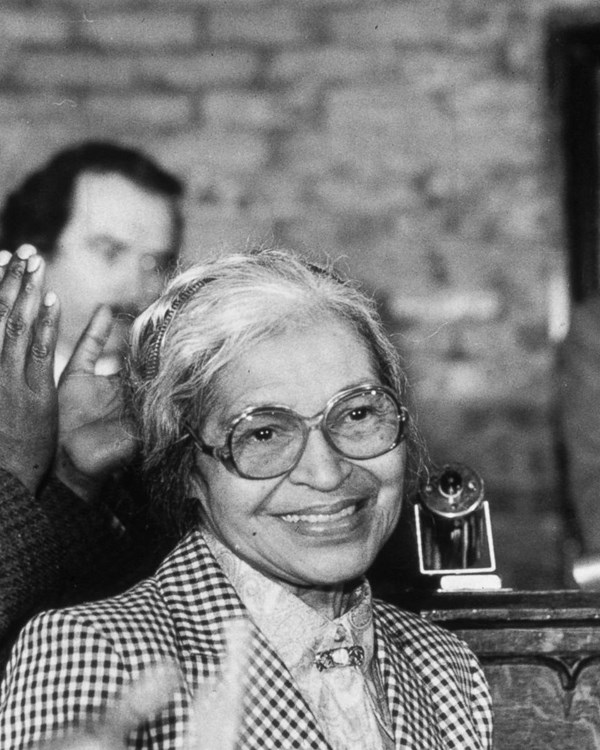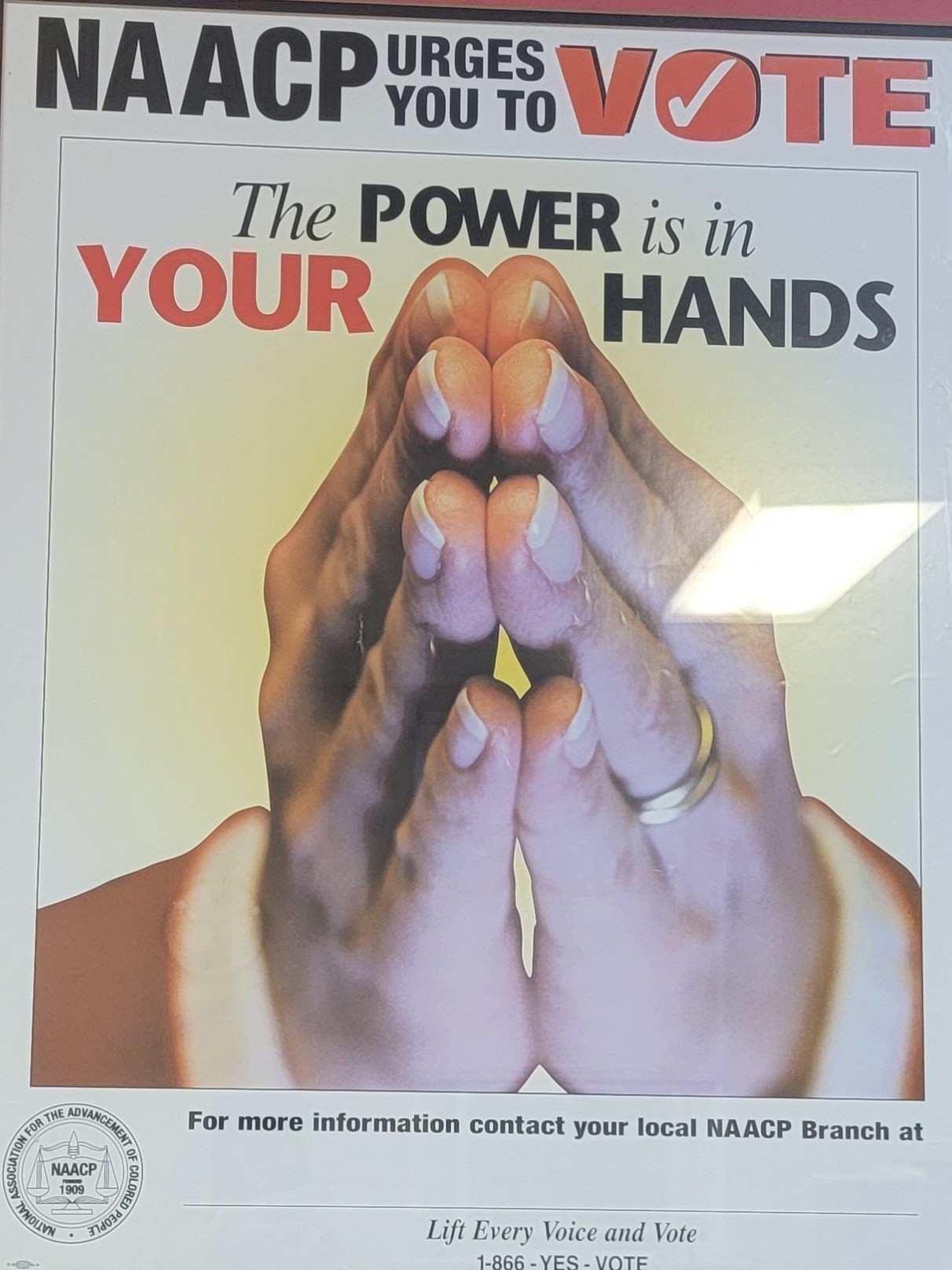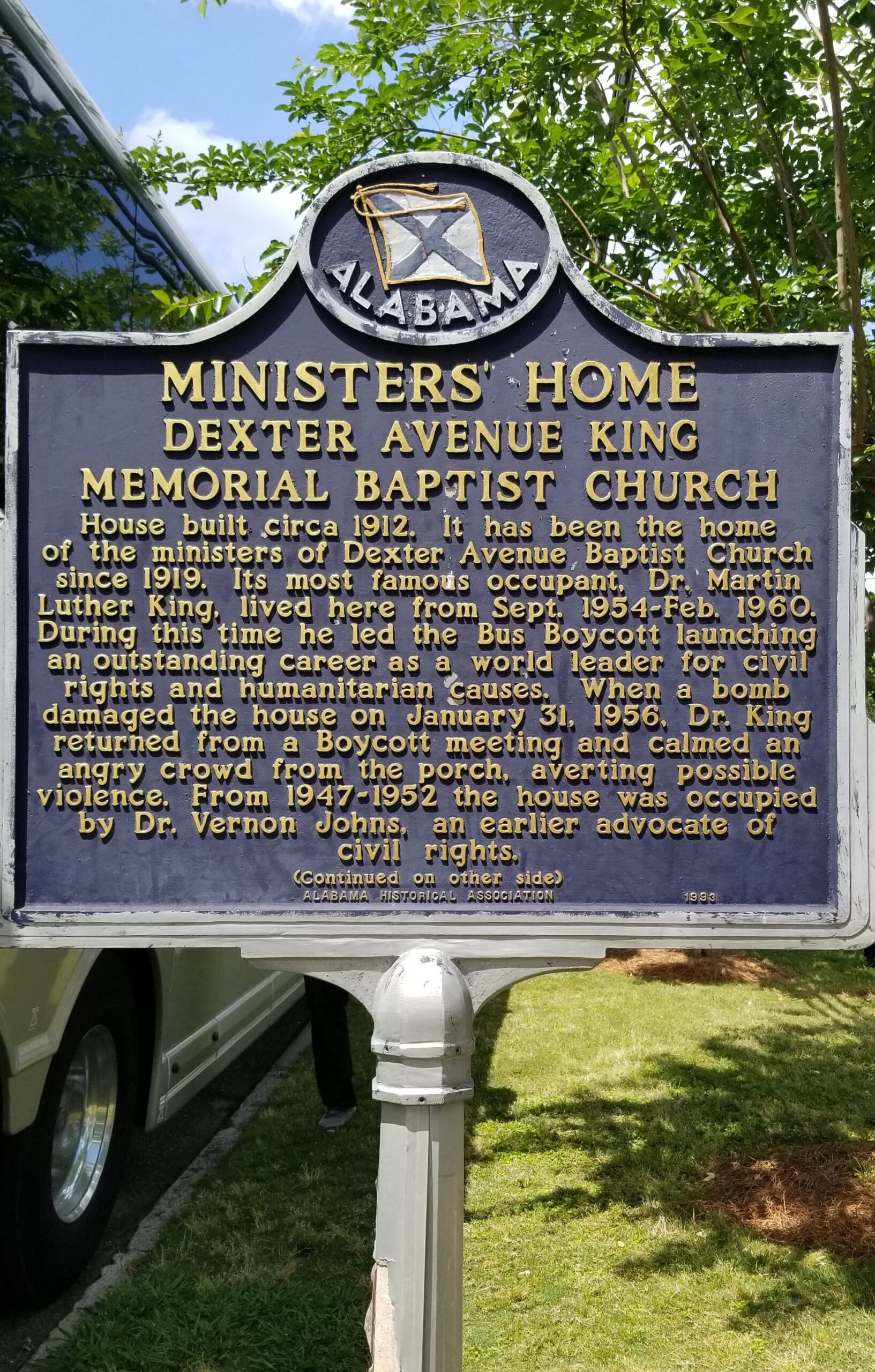Rosa Louise McCauley Parks was born February 4, 1913, died on October 24, 2005, and in between was #7053 on the police blotter of Montgomery, AL on December 1, 1955, for breaking the state’s segregation laws.

“All operators and other employees while in charge of busses are hereby invested with the police power of a police officer of said City, to carry out said provisions, and any passenger refusing or failing to take a seat among those assigned to the race to which he belongs—if there is such seat vacant—at the request of the conductor or employee in charge of said bus, shall, upon conviction, be fined not less than one nor more than one hundred dollars” (The Code of Ordinances of the City of Montgomery, Section 604
There are several interesting aspects of the now legendary stand of Rosa Parks to refuse to do that…stand, when she was already seated in the Black section of the Cleveland Avenue bus, #2857. What happened is that the white section filled up and the driver, James Frederick Blake, ordered her and 3 other Blacks in that first Black row to stand up and move to the back so a white person could sit down. In an historical account of the incident, according to Mrs. Parks, Blake said: “You’d better make it light on yourselves and let me have those seats.” The three others reluctantly did as told; Mrs. Parks did not. According to a later interview with the Washington Post, Blake said he got off the bus and called his supervisor as procedure dictated. “I got my supervisor on the line. He said, ‘Did you warn her, Jim?’ I said, ‘I warned her.’ And he said, and I remember it just like I’m standing here, ‘Well then, Jim, you do it, you got to exercise your powers and put her off, hear?’ And that’s just what I did.” Minutes later Montgomery police arrived and arrested Mrs. Parks and took her to jail. Many years later, the actual bus was purchased, restored, and is on display at the Henry Ford Museum in Dearborn, MI. [Above ,an award for Rosa Parks in her later years.]

A similar bus to the one in the Henry Ford Museum on which the drama of December 1, 1955 took place.
Mrs. Parks was only too well aware of Blacks that “overstepped their boundaries.” She was secretary of first the Montgomery, AL chapter of the NAACP, which she joined in December 1943, then later state secretary from 1948 until 1956. In her role at the NAACP, she worked with E.D. Nixon, president of the local NAACP chapter on cases of police brutality and other violence toward black citizens.
This was not the first time she had been ordered by this very same bus driver to follow an order. In 1943, she had gotten on h is bus, paid her fare and started walking toward the back, when he ordered her off the bus and to re-enter from the rear. When she got off the bus to do that, he drove away quickly to prevent her from entering the rear door. This action of entering by the front to pay one’s fare or having to enter through the back door and walk forward to pay then back again to sit was up to individual bus drivers. It wasn’t part of the bus segregation ‘Jim Crow’ law. Since that incident, she had made a concerted effort to avoid his bus.
is bus, paid her fare and started walking toward the back, when he ordered her off the bus and to re-enter from the rear. When she got off the bus to do that, he drove away quickly to prevent her from entering the rear door. This action of entering by the front to pay one’s fare or having to enter through the back door and walk forward to pay then back again to sit was up to individual bus drivers. It wasn’t part of the bus segregation ‘Jim Crow’ law. Since that incident, she had made a concerted effort to avoid his bus.
Nor was this the first time a Black woman had refused to give up her seat for a white person. All were courageous and played a role in what became the 381-day Montgomery Bus Boycott, from December 5, 1955 to December 20, 1956. Rosa Parks became the face of this particular action because of her understanding of what could happen to her [in fact she was fired from her seamstress job after her arrest and received death threats], her involvement with the NAACP, and the fact that she was a model citizen, that is a married, pleasant, respected woman of her community.
It’s estimated that between 30,000 to 50,000 Black Montgomery citizens participated in the boycott. The idea was actually that of Jo Ann Robinson, who had been verbally abused by a bus driver for not observing the bus segregation law shortly after moving to Montgomery to teach at Alabama State College. She soon joined the Women’s Political Council (WPC), a local civic organization for African American professional women with goals to fight racism, teach constitutional rights, register voters, provide leadership opportunities, and provide aid to women who were victims of rape or assault. After the arrest of Rosa Parks, she had the idea of a one-day bus boycott, and with help from the WPC distributed hundreds of flyers. It was so successful, the Black community decided to organize and continue the boycott.
According to the National Park Service in information on the Selma to Montgomery Civil Rights Trail: “E.D. Nixon, a local labor leader, [and NAACP official] organized a December 4 meeting at Dexter Avenue Baptist Church, where local black leaders formed the Montgomery Improvement Association (MIA) to spearhead a boycott and negotiate with the bus company. Over 70% of the cities bus patrons were African American and the one-day boycott was 90% effective. The MIA elected as their president a new but charismatic preacher, Martin Luther King, Jr. Under his leadership, the boycott continued with astonishing success. The MIA established a carpool for African Americans. Over 200 people volunteered their car for a carpool and roughly 100 pickup stations operated within the city.”
The M IA’s selection of Martin Luther King, Jr. turned out to be brilliant as he became the face of the Civil Rights Movement, although thousands were involved. King was only one who stood out among those that inspired and led, but his charisma and pastor-way of speaking made him a focal point for the media. It’s the foot soldiers who deserve so much credit for what was accomplished. How many of them were assassinated as a result is difficult to know for sure, but they and their sacrifices are another story. The Montgomery Bus Boycott is often considered the start of the Civil Rights Movement. Civil rights for historically marginalized U.S. populations has made considerable progress. However, the last election, among other actions, has shown us that racism ageism, genderism, and misogyny are still strong elements in our diverse, complex culture. Black History Month is one time when we can renew our stand on equality for all our citizens by learning about the history of our Black brothers and sisters. One way to do that is to subscribe to: hello@28daysofblackhistory.com
IA’s selection of Martin Luther King, Jr. turned out to be brilliant as he became the face of the Civil Rights Movement, although thousands were involved. King was only one who stood out among those that inspired and led, but his charisma and pastor-way of speaking made him a focal point for the media. It’s the foot soldiers who deserve so much credit for what was accomplished. How many of them were assassinated as a result is difficult to know for sure, but they and their sacrifices are another story. The Montgomery Bus Boycott is often considered the start of the Civil Rights Movement. Civil rights for historically marginalized U.S. populations has made considerable progress. However, the last election, among other actions, has shown us that racism ageism, genderism, and misogyny are still strong elements in our diverse, complex culture. Black History Month is one time when we can renew our stand on equality for all our citizens by learning about the history of our Black brothers and sisters. One way to do that is to subscribe to: hello@28daysofblackhistory.com
